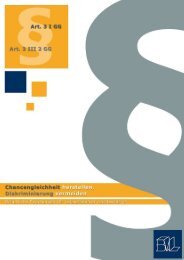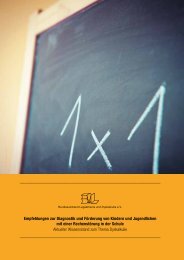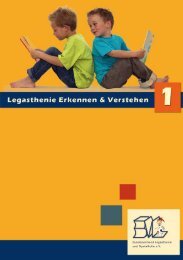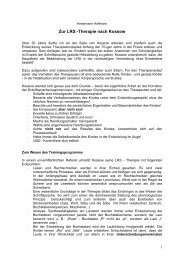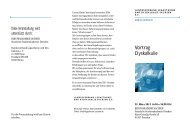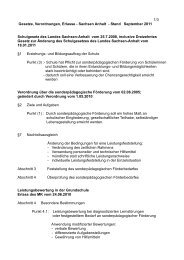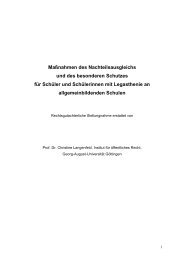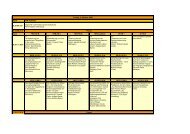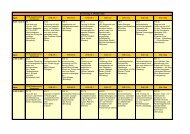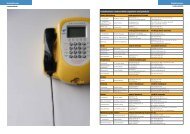Testverfah - Bundesverband Legasthenie und Dyskalkulie eV
Testverfah - Bundesverband Legasthenie und Dyskalkulie eV
Testverfah - Bundesverband Legasthenie und Dyskalkulie eV
Erfolgreiche ePaper selbst erstellen
Machen Sie aus Ihren PDF Publikationen ein blätterbares Flipbook mit unserer einzigartigen Google optimierten e-Paper Software.
Abstractband 15. Kongress des <strong>B<strong>und</strong>esverband</strong>es <strong>Legasthenie</strong><br />
results suggest that the neural basis for reading, as revealed with fMRI, is shaped by<br />
a multitude of factors and that these play a role not only in early childhood, but long<br />
after formal schooling is completed.<br />
Korrespondenzautor:<br />
Guinevere Eden<br />
edeng@georgetown.edu<br />
++1 202 7844407<br />
++1 202 7842414<br />
Visual and auditory attention in dyslexic children<br />
*Andrea Facoetti<br />
Dipartimento di Psicologia Generale, Padova, Italien<br />
Automatic multi-modal attention (AMA) was studied in 15 “phonological” dyslexics,<br />
6 “non-phonological” dyslexics and 27 normally reading children by measuring reaction<br />
times (RTs) to lateralized visual and auditory stimuli in spatial-cued detection<br />
tasks. The results show a slower time course of AMA only in phonological dyslexic<br />
children than in normally reading children. Specifically, no cueing effect (i.e., RTs<br />
difference between cued-uncued) was fo<strong>und</strong> in phonological dyslexic children at 100<br />
ms cue-target delay, while it was present at 250 ms cue-target delay. In contrast, in<br />
normally reading children, a cueing effect was fo<strong>und</strong> at the shorter cue-target delay<br />
but it disappeared at the longer cue-target delay, as predicted by theories of automatic<br />
capture of attention. Finally, in phonological dyslexics, individual differences in<br />
time course of AMA accounted for 32% of unique variance in nonword reading accuracy<br />
after controlling for individual differences in age, IQ and phonological skills. The<br />
results suggest that AMA may be crucial for learning to read by phonological route,<br />
and I propose a possible causal explanation of how an AMA deficit leads to specific<br />
nonword reading disability.<br />
Korrespondenzautor:<br />
Andrea Facoetti<br />
andreafacoetti@unipd.it<br />
++39 049 8276672<br />
++39 049 8276600<br />
Gestaltung von Förderunterricht mit dem Rechtschreibkarten-System (RekaS)<br />
*Wolfgang Finck<br />
LRS-Training e. V., Kiel, Deutschland<br />
Es wird ein Kartensystem vorgestellt, das sich an einem strukturierten <strong>und</strong> stufenweisen<br />
Wortmaterial orientiert. Das ausgewählte Wortmaterial folgt dem Grunsatz<br />
vom Einfachen zum Schweren. Deshalb ist es besonders für den Förderunterricht,<br />
aber auch für das häusliche Üben geeignet. Mit den vielfältigen Wortkarten (z. B.<br />
Schlangenwörter, Kettenwörter, Silbenwörter) werden verschiedene Spiel- <strong>und</strong><br />
24



